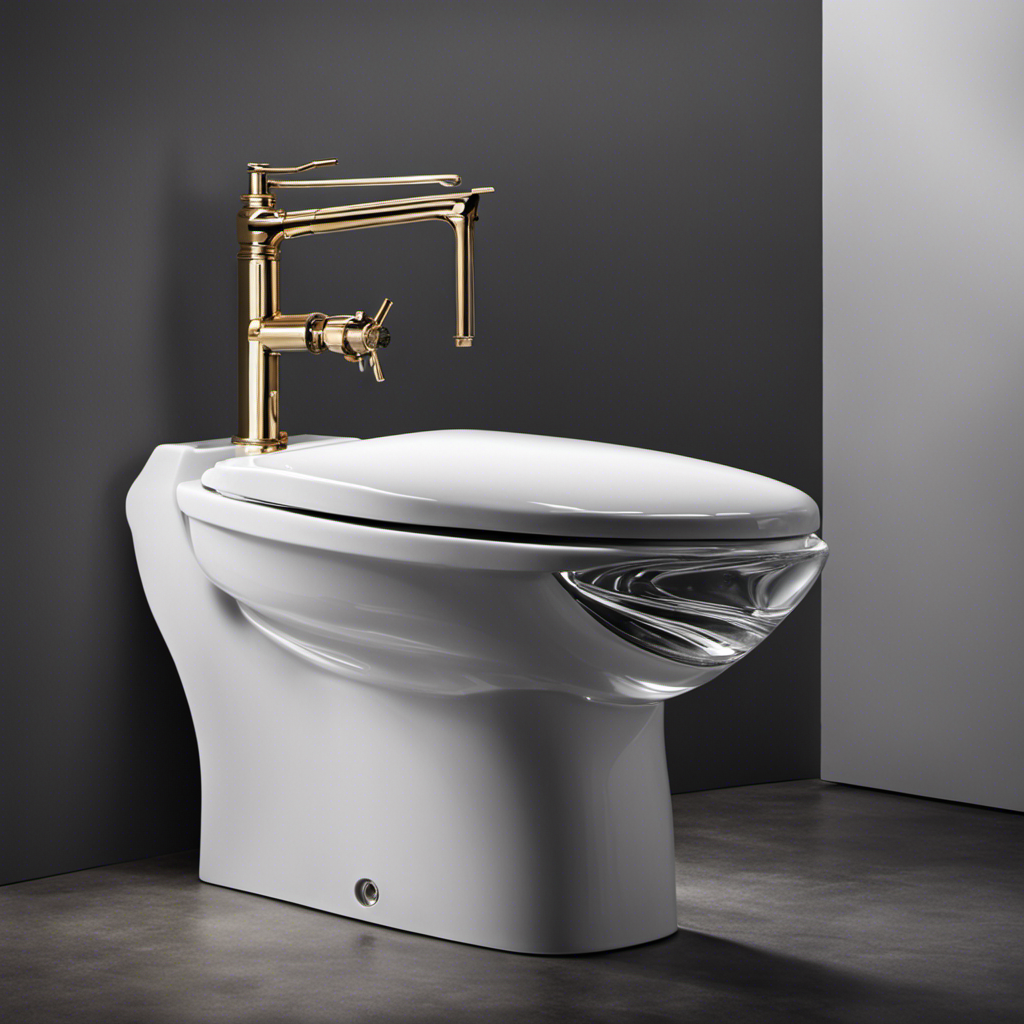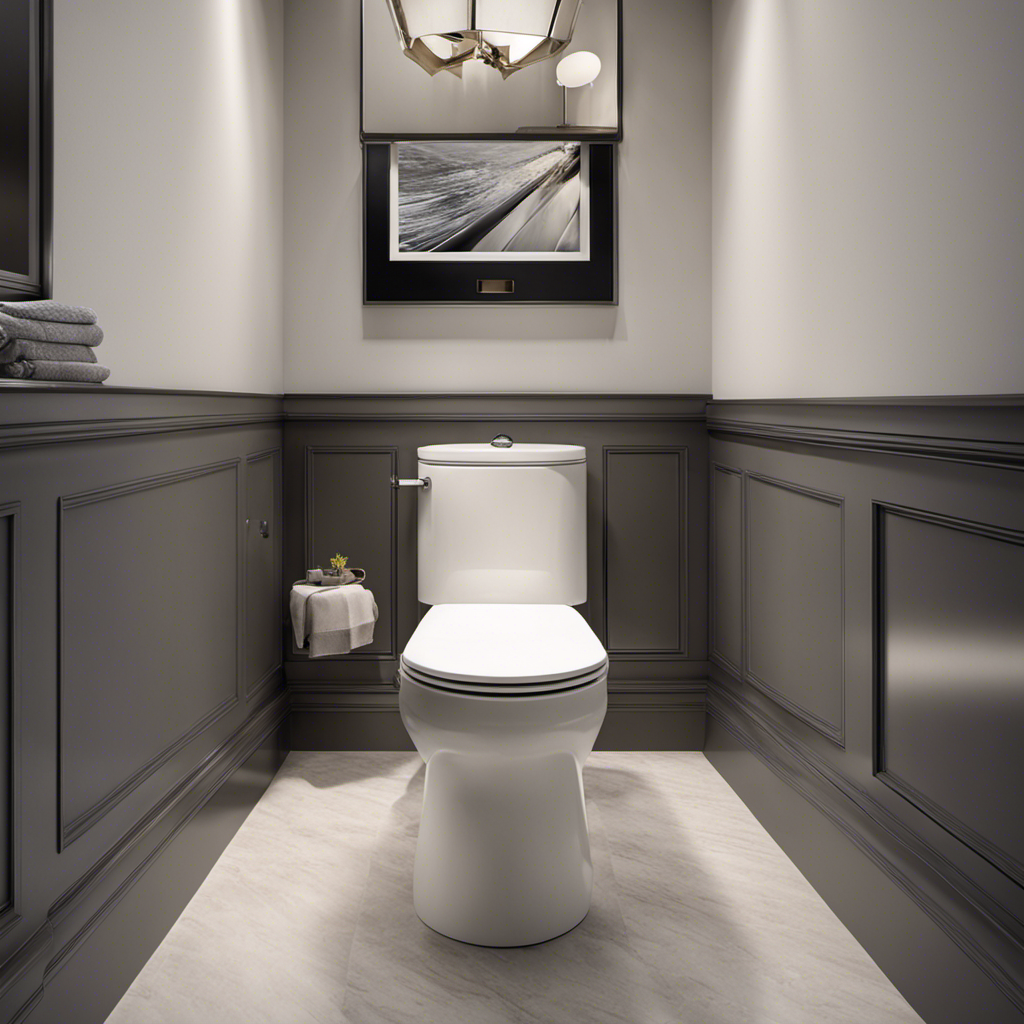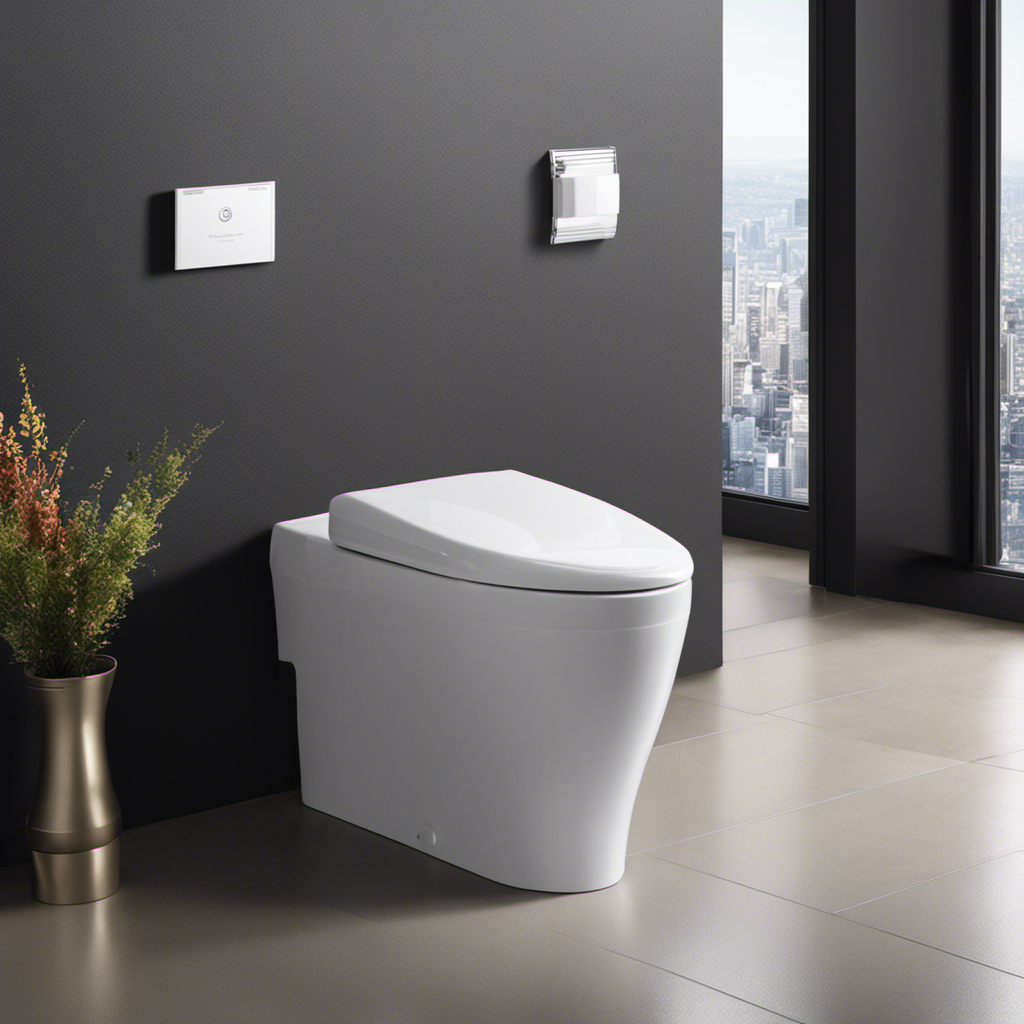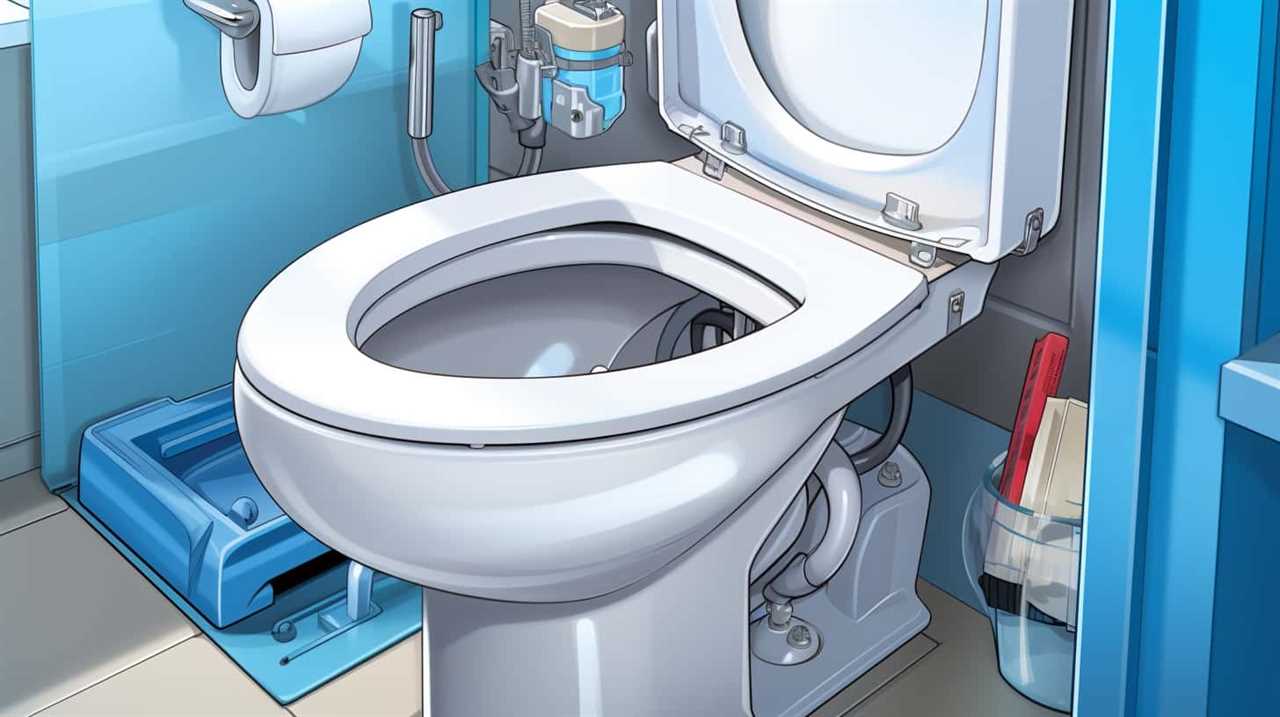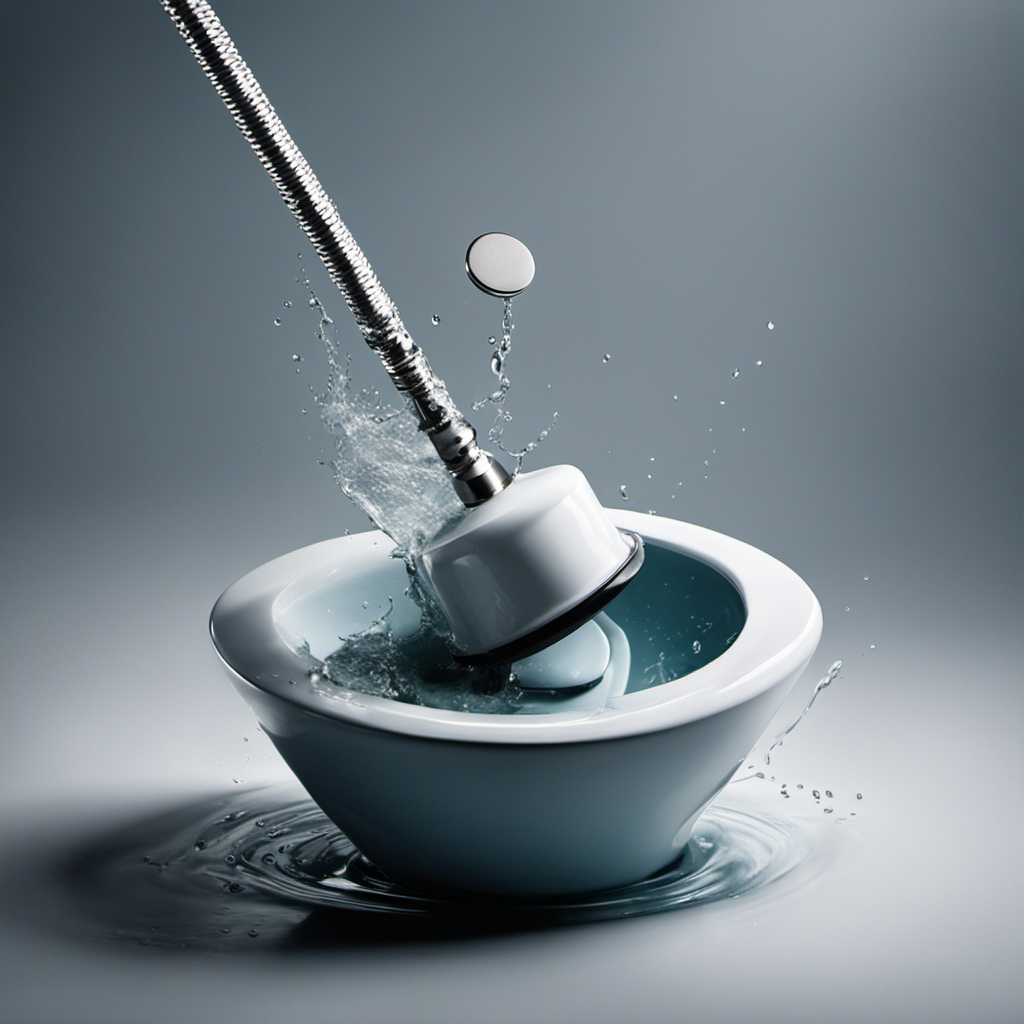Have you ever been jolted awake in the middle of the night by the sound of a running toilet? I know I have, and let me tell you, it’s not a pleasant experience.
But fear not, because in this article, I’m going to delve into the common causes of a running toilet and provide you with the knowledge and steps to fix it.
So grab your tool kit and let’s put an end to that incessant running water once and for all.
Key Takeaways
- A running toilet can be caused by a faulty flapper, including wear, damage, or a leak in the flapper.
- Inadequate water pressure can also contribute to a running toilet.
- Regular maintenance of the flapper and flush valve is essential.
- A faulty fill valve can cause continuous water flow, leading to a running toilet and increased water bills.
Common Causes of a Running Toilet
One of the most common causes of a running toilet is a faulty flapper. The flapper is a rubber valve located at the bottom of the toilet tank. Its purpose is to seal the opening between the tank and the bowl, preventing water from continuously flowing into the bowl.
Over time, the flapper can become worn or damaged, resulting in a leak. This can lead to a running toilet, wasting water and causing an increase in water bills.
Toilet maintenance is crucial in preventing a running toilet. Regularly checking and replacing the flapper is essential to ensure proper functioning. Additionally, it is important to maintain adequate water pressure in order for the toilet to perform optimally.
Understanding the flapper and flush valve is key in troubleshooting and resolving running toilet issues.
Understanding the Flapper and Flush Valve
To understand why your toilet keeps running, it’s important to know how the flapper and flush valve work together.
The flapper is a rubber seal that covers the flush valve opening at the bottom of the tank. When you flush the toilet, the flush valve opens, allowing water to rush into the bowl and create the flush. Once the tank is empty, the flapper should close tightly, preventing any more water from entering the bowl.
However, if the flapper is damaged or worn out, it may not seal properly, causing water to continuously flow into the bowl. To prevent this, regular flapper maintenance is essential.
Here are some water conservation measures you can take:
- Inspect the flapper for any signs of wear or damage.
- Clean the flapper and the flush valve to ensure a tight seal.
- Adjust the chain connecting the flapper to the flush handle to ensure proper functioning.
- Consider replacing the flapper with a more efficient, water-saving model.
- Install a dual flush mechanism to control the amount of water used for each flush.
How a Faulty Fill Valve Can Cause a Running Toilet
Inspect your fill valve for any signs of malfunction or damage. A faulty fill valve can cause your toilet to run continuously, leading to a significant increase in your water bill. To understand the importance of replacing a malfunctioning fill valve, let’s take a look at the following table:
| Issue | Causes | Solutions |
|---|---|---|
| Constant flow | Worn-out valve seal or debris | Replace the fill valve or clean the valve seal |
| Overflowing tank | Faulty float mechanism or water pressure | Adjust the float mechanism or check the water pressure |
| Inadequate fill | Low water pressure or valve blockage | Increase water pressure or clear any blockage in the valve |
Troubleshooting a Running Toilet: Steps to Take
Let’s start by identifying common causes of a running toilet and discussing troubleshooting steps. When dealing with a running toilet, it’s important to address the issue promptly to avoid potential water waste and higher utility bills.
Here are some steps to help you troubleshoot the problem:
- Check for signs of a leak, such as water constantly running into the bowl.
- Inspect the flapper valve to ensure it is properly sealing the flush valve opening.
- Examine the fill valve for any signs of damage or blockage.
- Verify that the float arm is adjusted correctly, allowing the tank to fill to the appropriate level.
- Check the chain connecting the flapper valve to the flush handle, ensuring it is properly connected and not too tight or loose.
Fixing a Running Toilet: DIY Solutions
Make sure you have the necessary tools and materials before attempting to fix a running toilet. Toilet repair can be a simple DIY project if you have the right supplies.
To stop water wastage and save money on your water bill, follow these steps.
First, turn off the water supply valve located behind the toilet.
Next, remove the tank lid and inspect the flapper valve. If it’s worn or damaged, replace it with a new one.
If the flapper valve is fine, check the fill valve. Adjust the float arm to control the water level in the tank.
If that doesn’t solve the issue, check the chain length connecting the flush handle to the flapper valve. Adjust as needed.
Frequently Asked Questions
How Much Water Does a Running Toilet Waste?
A running toilet can waste a significant amount of water, which is detrimental to water conservation efforts. To prevent this, it is essential to promptly address any toilet repair issues that may be causing the problem.
Can a Running Toilet Cause an Increase in Water Bills?
A running toilet can cause an increase in water bills due to the continuous flow of water. It’s like a leaky faucet that never stops. To avoid this expense and promote water conservation, it’s important to fix the issue promptly.
Are There Any Health Risks Associated With a Running Toilet?
There can be health implications associated with a running toilet, such as the growth of harmful bacteria. To prevent this, regular maintenance and repairs are necessary to ensure proper flushing and water flow.
Can a Running Toilet Damage the Plumbing System?
A running toilet can damage the plumbing system if left unfixed. To prevent this, here are some toilet repair tips: check the flapper valve, adjust the water level, and inspect the fill valve. Common causes of running toilets include worn-out parts and water pressure issues.
How Long Can a Running Toilet Go Unnoticed Before Causing Significant Damage?
A running toilet can cause significant damage if left unnoticed. Signs of a running toilet include water continuously flowing into the bowl and a constantly running water sound.
Conclusion
In conclusion, understanding the causes and solutions for a running toilet can save you time, money, and frustration.
Just like a well-oiled machine, the intricate workings of a toilet require proper maintenance and care.
By familiarizing yourself with the flapper, flush valve, and fill valve, you can troubleshoot and fix the issue yourself.
Don’t let a running toilet become a constant annoyance in your life.
Take action, be the hero of your bathroom, and restore peace and tranquility to your porcelain throne.
